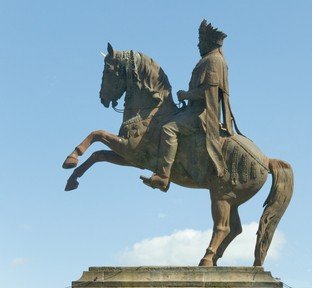
Menelik II, Emperor of Ethiopia Quiz
Baptised Sahle Maryam, this illegitimate and unrecognised son of the King of Shewa not only gained his ancestral crown, but went on to become Emperor of Ethiopia. He is generally credited with establishing the modern nation of Ethiopia.
An ordering quiz
by looney_tunes.
Estimated time: 3 mins.